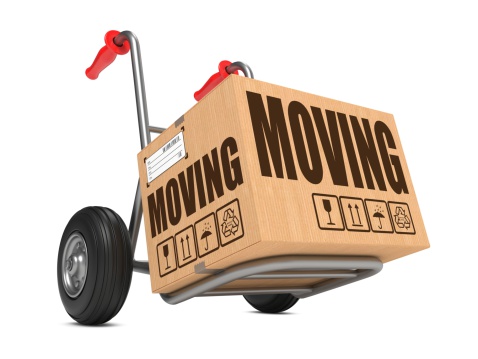By Chan Plett
Whether you’re having growing pains or upgrading your small business’ office space, moving to a new location can seem like a huge change loaded with challenges. Are you prepared for the big office move? If you need some guidance for the task ahead, check out this ultimate 5-part guide to moving your small business with ease.
- Plan Out a Timeline. When’s your move deadline? Pick a date that works with your team and with you. Avoid any major rollouts and project deadlines when choosing a time for the relocation. Also, consider what needs to be accomplished along each step of the way during the move. You might need to set up times to meet with the new office leasing agent. You might need to schedule consulting time with your movers. Remember to schedule meetings with your team to inform them of the forthcoming moving plans as well. Plan and write out a timeline, with markers for key project deadlines you’ll have to meet, and for key moving progress dates, before you’ll be ready to move.
- Organize Resources. Consider how many extra hours of labor you’ll need to push ahead. During the time your office may be transitioning, expect for decreased work output. By trimming down or recalculating deadlines, you can help prepare for a seamless move by delegating tasks and rallying your team to work overtime. Entice your team with fun incentives for working extra hours and achieving deadlines ahead of time so that by the time your move date arrives, you’re in a great position. Making sure your team is ahead of schedule during a big move can really help allot time to pack, unpack, and get set up. Also, make sure your IT team or tech-savvy employees can designate their time to the move by installing new networks and setting up all computers at your work place.
- Hire movers. You and your team are on the clock to do whatever you do best—don’t think you can move an entire office using your allotted manpower. Hiring the right movers is essential. Companies like Free Moving Quotes can help you figure out how much an office move should cost, or at least offer a rough range of rates. Once you’ve decided on a moving company, think about your resources and your timeline when choosing a move date.
- Rent Moving Bins. Cardboard boxes are hardly the right material for moving heavy office items like paperwork and computer accessories. Many companies offer eco-friendly and durable moving bins. Renting these containers and assigning numbering to them can help organize your team’s belongings can make unpacking and settling into a new office super easy. Check out BungoBox or ZippGo for rental moving boxes. They’re durable and easily transported—no packing tape needed.
- Update Your Addresses & Contact Info. A month before moving, make plans to change your business address, email signatures, and contact info (like telephone numbers) anywhere they’re listed. This includes public directories, websites, business cards, letterheads, and more. Making an announcement via email or on your website about the move listing the actual date of the move can make sure clients and fellow business partners are aware of the relocation and change.
You should be ready to welcome moving day with this ultimate 5-part guide to moving a small business. Consider any moving challenge your small business or office might encounter under control, whether it’s the planning, meeting moving date goals, or hiring the movers. Of course, there are always surprises when it comes to moving, so if you’ve got any tips for moving offices, let us know!
Chan Plett is a professional content writer for the web and self-proclaimed moving expert, after having moved nearly once or twice every year for the past 8 years. She’s written for doityourself.com, The Dollar Stretcher, and several online blogs.







